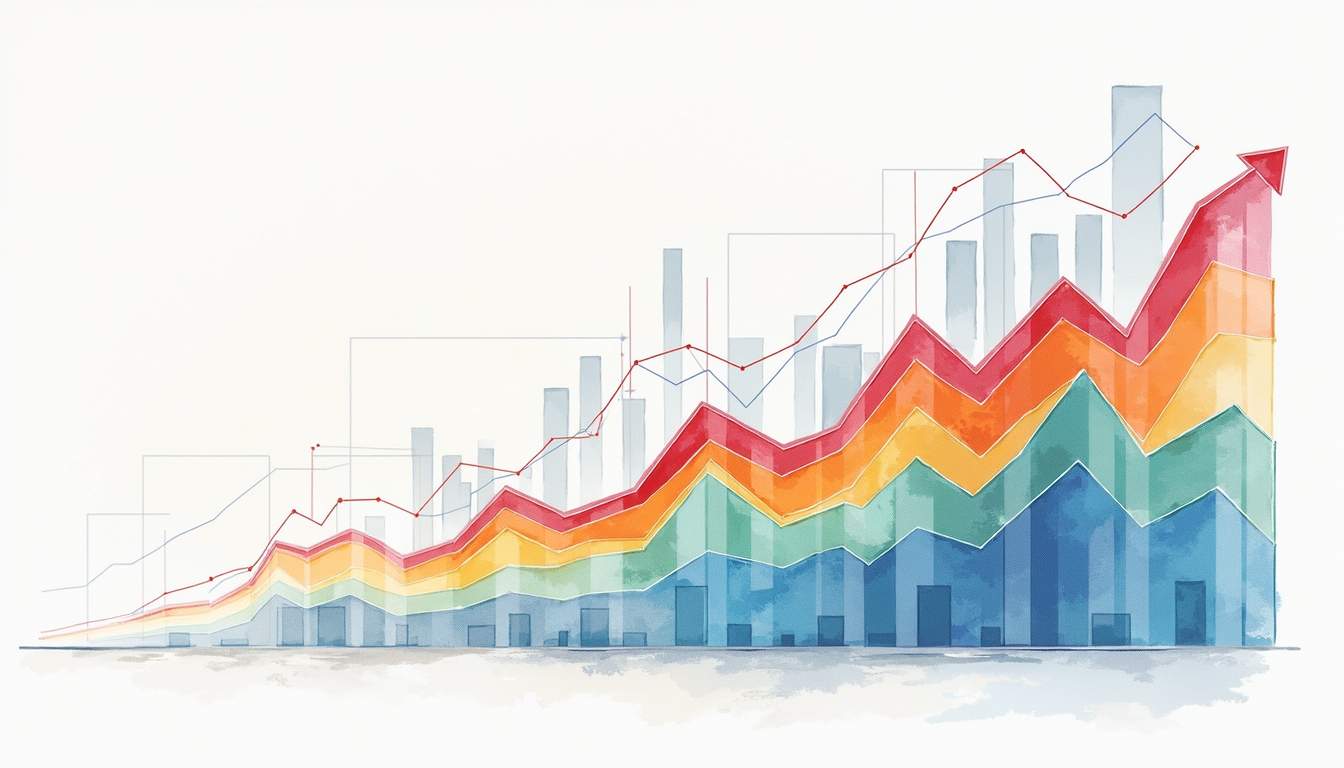In today’s highly competitive market, understanding and executing an effective pricing strategy is pivotal for sustained business success. A pricing strategy that is grounded in data can provide businesses with the competitive edge they need. This article explores the steps and considerations for analyzing sales data to inform your pricing strategy.
Understanding the Importance of Sales Data Analysis
Sales data analysis plays a crucial role in shaping a company’s pricing strategy. By leveraging sales data, businesses can derive intelligence that aids in setting competitive and profitable prices. Data analysis helps to demystify customer behavior and market trends, providing a fact-based foundation for pricing decisions.
The Role of Sales Data in Pricing Decisions
Sales data provides businesses with a wealth of information, from customer preferences to purchasing habits. It enables companies to tailor their pricing strategies to meet market demands effectively. The integration of sales data into pricing decisions ensures that prices are aligned with customer expectations and perceived value.
Moreover, sales data helps identify opportunities for price adjustments that can drive revenue and growth. By understanding how price changes affect sales volume and profit margins, businesses can iterate on pricing strategies to optimize their outcomes. For instance, analyzing seasonal trends in sales can reveal the best times to implement discounts or promotional pricing, allowing companies to maximize their sales during peak periods while also maintaining healthy profit margins.
Benefits of Data-Driven Pricing Strategies
Implementing data-driven pricing strategies presents numerous benefits, including improved accuracy in pricing, increased profitability, and enhanced customer satisfaction. Such strategies allow businesses to react swiftly to market changes and customer needs, fostering a dynamic pricing environment.
The use of data-driven strategies also reduces the risks associated with price setting. It minimizes guesswork and subjective decision-making, replacing them with empirical evidence and statistical analysis. Consequently, businesses can make informed decisions that support sustainable growth. Furthermore, by continuously monitoring sales data, companies can refine their pricing models over time, adapting to shifts in consumer behavior or competitor actions. This ongoing process not only helps in maintaining a competitive edge but also builds customer trust, as consumers are more likely to feel valued when they perceive that pricing is fair and reflective of their needs.
Collecting and Organizing Sales Data
Before analysis can commence, it’s imperative to gather and organize sales data effectively. This process involves identifying key data sources, selecting appropriate tools, and structuring the data for ease of analysis.

Identifying Key Data Sources
Sales data can be gathered from a variety of sources, including point-of-sale systems, e-commerce platforms, and customer relationship management systems. It is essential to identify which sources provide the most relevant and accurate data in order to focus efforts where they will be most impactful.
Businesses should prioritize data sources that offer comprehensive insight into sales channels and customer interactions. This may include online sales data, in-store purchases, and feedback from sales teams, all of which contribute unique perspectives on customer buying behaviors. Additionally, integrating social media analytics can provide valuable context regarding customer sentiment and engagement, allowing businesses to adapt their strategies based on real-time feedback and trends.
Tools and Software for Data Collection
The right tools and software are vital for efficient data collection and storage. Solutions such as sales analytics platforms, data dashboards, and cloud-based databases can streamline the process, ensuring data integrity and accessibility.
Choosing the appropriate tools often depends on the specific needs and capabilities of the business. It’s beneficial to evaluate options based on factors such as scalability, integration capabilities, and user-friendliness to ensure they support effective data analysis over the long term. Furthermore, businesses may consider employing artificial intelligence and machine learning tools that can automate data collection processes, providing deeper insights and predictive analytics that can inform future sales strategies.
Structuring Data for Analysis
Organizing sales data in a coherent structure is crucial for effective analysis. Data should be categorized by relevant attributes, such as product type, customer demographics, and transaction dates, to facilitate detailed insights.
Businesses may employ data management techniques, including data cleansing and normalization, to enhance the quality and consistency of the data. This structured approach allows for the identification of patterns and trends that might otherwise remain obscured in raw data. Additionally, implementing a robust tagging system can further enhance data retrieval and analysis, enabling teams to quickly access specific datasets and draw meaningful conclusions that drive decision-making processes. By fostering a culture of data literacy within the organization, employees can become more adept at interpreting these insights, ultimately leading to more informed strategic initiatives.
Key Metrics to Focus On
Focusing on the right metrics is essential in drawing actionable insights from sales data. By honing in on specific metrics, businesses can better understand performance and inform successful pricing strategies.

Sales Volume and Revenue Trends
Analyzing sales volume and revenue trends provides a clear picture of product performance over time. These metrics help to identify peak sales periods, forecast future demand, and assess the impact of previous pricing changes.
Sales volume, when analyzed alongside revenue, offers insights into unit economics and customer willingness to pay. This balance aids businesses in configuring optimal price points that maximize revenue without compromising sales momentum. Additionally, tracking seasonal fluctuations in sales volume can reveal opportunities for targeted marketing campaigns, enabling businesses to capitalize on high-demand periods and mitigate slow sales seasons.
Furthermore, integrating sales volume data with broader market trends can enhance forecasting accuracy. By understanding external factors such as economic conditions, consumer confidence, and industry developments, businesses can make more informed decisions about inventory management and resource allocation, ultimately leading to improved profitability.
Customer Segmentation and Behavior
Customer segmentation involves dividing the customer base into distinct groups according to characteristics such as purchasing behavior, demographics, and product preferences. Understanding these segments allows businesses to tailor pricing strategies to different customer needs.
Insights into customer behavior can guide promotional efforts, determine optimal discount levels, and identify cross-selling opportunities that enhance revenue potential. Deep analysis of customer data leads to more personalized pricing approaches, improving customer retention and loyalty. For instance, recognizing patterns in repeat purchases can help businesses create loyalty programs that incentivize frequent buyers, while also allowing for targeted discounts that resonate with specific segments.
Moreover, leveraging advanced analytics techniques, such as predictive modeling, can further refine customer segmentation efforts. By anticipating future buying behaviors based on historical data, businesses can proactively adjust their pricing strategies to align with evolving customer expectations, ensuring they remain competitive in a rapidly changing marketplace.
Competitor Pricing Analysis
Competitor pricing analysis helps businesses understand their market positioning and adjust prices to better compete. By monitoring competitor pricing strategies, businesses can anticipate market shifts and react accordingly.
This analysis often involves benchmarking against industry standards, evaluating competitors’ price points, and assessing their value propositions. Staying informed about competitor moves ensures that pricing strategies remain competitive and adaptive to market changes. Additionally, understanding the rationale behind competitors’ pricing decisions—such as cost structures, target markets, and promotional tactics—can provide valuable insights that inform a business’s own pricing strategy.
Moreover, competitor pricing analysis should not be a one-time effort; it requires ongoing vigilance and adaptation. Regularly revisiting competitor pricing can unveil emerging trends, such as the introduction of new pricing models or innovative bundling strategies that could disrupt the market. By maintaining a dynamic approach to competitor analysis, businesses can not only safeguard their market share but also seize opportunities to differentiate themselves through unique value offerings that resonate with their target audience.
Analyzing Sales Data for Pricing Insights
The final step in developing an effective pricing strategy is analyzing sales data to extract meaningful pricing insights. This involves identifying patterns, employing statistical methods, and utilizing predictive analytics to forecast future trends.

Identifying Patterns and Trends
Identifying patterns and trends in sales data is crucial for informed decision-making. By analyzing historical data, businesses can uncover repeating patterns, such as seasonal trends and customer purchasing cycles, that inform pricing strategies.
This analytical process requires a combination of historical sales data, market research, and contextual understanding to deliver comprehensive insights. Recognizing these trends enables businesses to capitalize on opportune moments to adjust prices accordingly. For instance, a retailer might notice a spike in sales of winter apparel during the holiday season, prompting them to increase prices slightly to maximize profit margins while still remaining competitive. Additionally, understanding customer demographics and preferences can further refine these insights, allowing businesses to tailor their pricing strategies to specific segments of their audience.
Using Statistical Methods for Deeper Insights
Statistical methods, such as regression analysis and hypothesis testing, offer powerful tools for uncovering deeper insights from sales data. These methods help quantify relationships between variables and ascertain the effects of pricing changes.
Employing statistical techniques provides a rigorous foundation for hypothesis-driven analysis, enhancing the reliability of pricing strategies. By testing different scenarios and evaluating outcomes, businesses can hone strategies that are both effective and resilient. For example, a company may use regression analysis to determine how price elasticity affects demand, allowing them to adjust their pricing in real-time based on customer response. Furthermore, integrating A/B testing into the pricing strategy can provide immediate feedback on customer reactions to price changes, ensuring that businesses remain agile and responsive to market dynamics.
Predictive Analytics for Future Pricing
Predictive analytics leverages historical data to forecast future pricing trends and customer behaviors. This forward-looking approach helps businesses anticipate market changes and position themselves strategically.
By implementing sophisticated algorithms and machine learning models, predictive analytics can simulate various pricing scenarios, allowing businesses to experiment with different strategies before implementation. This foresight is invaluable in crafting pricing strategies that are both adaptive and forward-thinking. Moreover, predictive analytics can also incorporate external factors such as economic indicators, competitor pricing, and consumer sentiment, providing a holistic view of the market landscape. For instance, if a sudden economic downturn is predicted, businesses can proactively adjust their pricing models to maintain sales volume while protecting their profit margins, ensuring they remain competitive even in challenging times.
Maximize Your Hotel’s Revenue with Prosper Hotels
Understanding and implementing an effective pricing strategy is just the beginning. At Prosper Hotels, we take your hotel’s revenue management to the next level. Our expert team is ready to apply these principles to help you analyze sales data, refine your pricing strategies, and unlock your hotel’s full earning potential. With our comprehensive suite of services, including state-of-the-art digital marketing and efficient group housing solutions, we are committed to not just meeting, but exceeding your revenue goals. Learn More about how Prosper Hotels can transform your hotel’s revenue management and ensure your success in the competitive hospitality market.


 Drive More Hotel Revenue
Through Untapped Strategies
Drive More Hotel Revenue
Through Untapped Strategies
